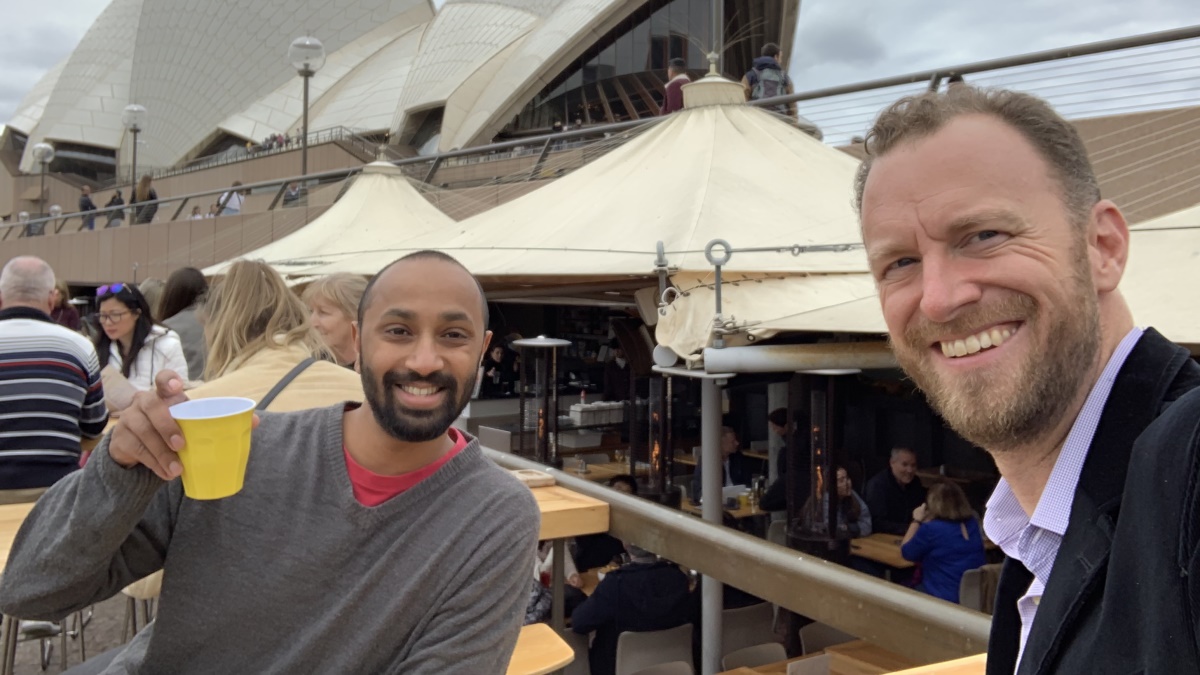What’s the connection between vision systems, artificial intelligence (AI), and evolutionary biology? Xailient co-founder and CTO, Shivy Yohanandan is here to provide the answers.
I was recently asked the question: “Where’s the intersection between your personal mission/calling as founders, and the calling of this technology, and its potential to affect human progress?”
I studied neuroscience, and my revelation was that the brain only exists because of senses. Without senses, there’s absolutely no reason for brains in nature!
And as it turns out, senses are responsible for EFFICIENT survival. Without senses, we’d be just wandering the Earth randomly until we bump into a predator or prey. And this random wandering towards food or waiting for food to randomly wander into your mouth is not very efficient, and nothing could survive this way.
And senses need actuators.

So it’s a simple cycle: a sensory receptor sends info to a brain, which processes that info, and then sends info to an actuator to either do nothing or something.
I also studied evolutionary biology, and my revelation was that the sum of all living things combined with the planet we live on can be thought of as a living thing too. Yes, Earth is alive, lol! But the problem is that our species in particular is very wasteful of resources.
Think of all the wastage that happens in your day-to-day.
All those skyscrapers and highways burning power when not a soul is in the building or on the road. All the appliances trickling power in your own home for no reason. All those homes with more cars than people. All those five-seater cars driving around with only one driver. All that wasted food… water… time at shopping centers… businesses open when there are typically no customers at that particular time… the list goes on and on! So you see, as a collective, we’ve become like an animal with no senses… wandering aimlessly while burning through a lot of resources which will inevitably end one day.
So then it occurred to me that what this planet needs are senses… sensory receptors in the form of IoT devices (e.g. cameras!). This also means we need a brain to process all that sensory information… so we are more efficient at managing our limited resources. The brain also needs to send information to actuators: turn the lights/heating off; stock shelves at this time when it’s less busy; pick up these four people since they’re on the way to your destination; only make this much food, and so on!
I also studied bioengineering, and my revelation was that I knew how to build brains!
But I wasn’t the first person to think of all this. Smart buildings and cities… driverless cars … retail analytics… all these things exist! People already know that IoT and AI go hand-in-hand to build this future of more efficient living. That’s what everyone is already trying to build! They all see the same opportunity here: using your data to serve you better (and save the planet as a bonus)!
But something fundamental was still missing. It turns out that the current approach to IoT and AI actually burns wayyy more power than it tries to save, especially when trying to process images and video from cameras (the sensor). Talk about the mother of all ironies!
So that’s when I did a PhD in AI and computer vision systems to try and figure out WTF is going on!
And that’s when I made a fundamental scientific discovery: selective attention, salience, and the four billion-year-old secret mechanism behind it! This mechanism explains the purpose of peripheral vision, and why it’s so important in living things.
Without peripheral vision, our brains would need to be about 50x larger. Imagine how many Big Macs you’d need to sustain that! So peripheral vision quickly and efficiently processes our entire visual field and then tells our central vision (which uses a much bigger and more complex part of the brain) where to look next! Then our central vision system processes that tiny region, thanks to peripheral vision!
Peripheral vision (and just peripheral information processing in general) is the key to efficient information processing in nature and all living things. You now only need to process the things that matter in your enormous field of view.
We at Xailient believe an opportunity lies in building the peripheral sensory system of the planet’s IoT infrastructure, particularly for vision IoT (i.e. cameras). We think all cameras need peripheral vision systems embedded in them, and Xailient wants to own that domain and business!
These peripheral vision systems are not only the key to efficient AI processing, they also solve the accuracy problem when trying to scale AI to 1,000s of cameras. Just as animals share this fundamental vision system, our approach to IoT vision allows every camera to benefit from this essential basic layer.
In other words, if you’re doing computer vision, you need Xailient’s peripheral vision systems to help your power-hungry, ‘central vision’ AI focus on what matters!

